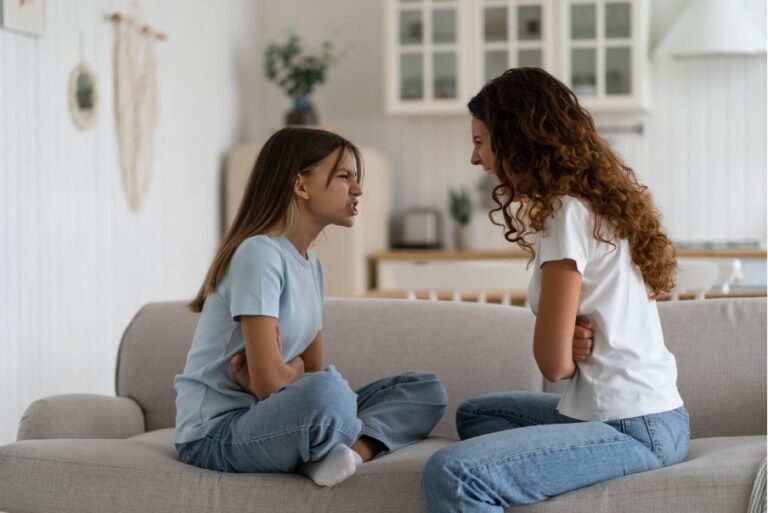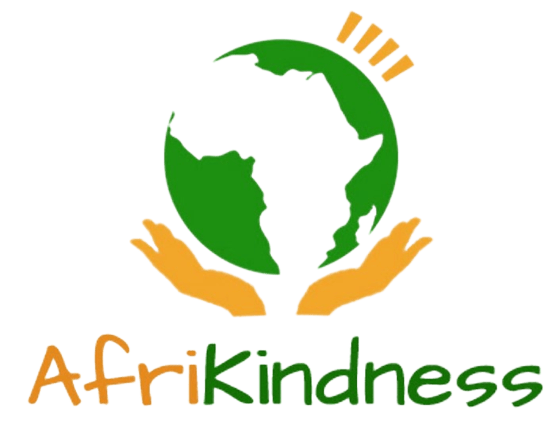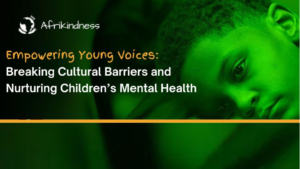
The proverb “A talking drum speaks louder than a silent one” signifies the power of expression and communication. It emphasizes that sharing one’s thoughts and feelings, like the resonant beats of a talking drum, can have a profound impact and make a meaningful contribution to conversations and community dynamics. In today’s fast-paced, digitally connected world, empowering children and young people with robust mental health tools is of utmost importance. Our society has been acknowledging the mental health of children and young people as crucial as their physical health. One such vital tool to promote mental well-being is the cultivation of self-expression, which bolsters the ideology that every child’s voice matters.
“My Voice Matters” is more than a theme; it’s a call to action, an anthem resonating with the essence of empowering the next generation. The tools they need to express themselves are not handed down by a single entity – parents, teachers, and society all play crucial roles.
The Necessity of Self-Expression Tools
Self-expression forms an integral aspect of a young person’s development. It paves the way for children to voice their emotions, thoughts, experiences, ideas, and viewpoints. The growth of self-esteem and self-confidence in children is often fuelled by their ability to communicate their feelings effectively. As children learn to manage their emotions, they develop increased self-awareness and assuredness.
The beauty of self-expression lies in its versatility. Children can express themselves in countless ways – be it through words, writing, artwork, music, dance or play. Each medium acts as a unique tool that allows children to convey their feelings and thoughts in a manner that is most natural and comfortable for them.
Self-expression is not only about speaking one’s mind. It’s about finding a unique language that best fits an individual’s personality and experiences. Each child has a distinct voice and manner of self-expression, making every expression rich and varied. It is through these diverse tools of expression that children can find their unique voice and realise that their voice matters.
Who Provides These Tools?
The provision of self-expression tools for children is a collective responsibility shared among parents, educators, and mental health professionals. Parents, as the first line of support, provide the initial toolkit. By encouraging open dialogue from a young age, parents can guide their children towards articulating their thoughts and emotions clearly and confidently. Teachers contribute by creating inclusive spaces within classrooms, allowing each student to feel heard and valued. Teachers can include activities encompassing various art forms such as drama, creative writing, and music into their curriculum, providing children with a wide array of channels for expression. Also, mental health professionals, with their specialised knowledge and skills, are crucial in this process. They are equipped to introduce therapeutic techniques like play therapy, art therapy, and cognitive-behavioural therapy. These therapies not only encourage children to externalise their thoughts and feelings but also aid in understanding and addressing any underlying mental health issues. Society at large, too, shapes these tools through policies and cultural attitudes that champion the voices of the young. Thus, the joint efforts of parents, educators, schools, mental health professionals and society are pivotal in equipping children with diverse self-expression tools.
The Importance of Encouraging Diverse Voices

Children, regardless of their racial or cultural backgrounds, have a right to express their feelings and be understood. It requires dismantling barriers that hinder self-expression. Oftentimes, cultural barriers deter children from freely voicing their opinions. These barriers could include societal expectations, stereotypes, and cultural norms that may inadvertently suppress diverse voices. Young people from diverse races and cultures should not only feel they have a voice but should be empowered to use it confidently.
Acknowledging the unique challenges faced by children from different backgrounds is essential. It’s about cultivating an inclusive environment where every voice, regardless of race or culture, is celebrated and respected.
So, it is our responsibility to overcome these hindrances and foster an inclusive space that allows every child to share their unique perspectives. This not only promotes cultural sensitivity and respect amongst children but also encourages empathy and unity. Mental health initiatives for children must recognise and honour the diversity of their experiences and perspectives. This inclusive approach helps children from different backgrounds feel valued, reinforces the notion that their voice matters, and nurtures a more understanding and tolerant society. It is through diversity that we can truly capture the richness of human experience and give it a voice.
Empowering children and young people with a voice is an investment in their mental well-being and holistic development. When they believe that their voices matter, they gain a sense of agency and self-worth. As we collectively work towards a world where every child confidently declares, “My Voice Matters,” we foster a society that not only listens but actively encourages positive change for the well-being of our future generations.
The journey towards empowering the voices of children and young people involves recognizing and dismantling barriers that may inadvertently stifle their diverse expressions.
Here’s a closer look at the common barriers:
- Societal Expectations: Society often carries predefined notions of how children should behave, adhering to certain norms. These expectations can limit a child’s ability to explore and express their unique identity and perspectives.
- Stereotypes: Stereotypes assign predefined characteristics to individuals based on factors such as race, gender, or socio-economic background. For children, these stereotypes can be restrictive, shaping how they are perceived and limiting their self-expression.
- Cultural Norms: While cultural norms are integral to preserving heritage, they can sometimes inadvertently create boundaries for children. Encouraging an open dialogue about cultural norms, allowing for questioning and understanding, fosters an environment where children feel free to express their thoughts, even if they challenge existing norms.
- Parental Expectations: Parents, with the best intentions, may have expectations for their children shaped by their own experiences. Balancing the desire for certain achievements by allowing children the freedom to express their aspirations is crucial for fostering a healthy sense of self.
- Educational Systems: Educational systems that emphasize conformity over individual expression can inadvertently send the message that there is a singular path to success. Recognizing and celebrating diverse talents and learning styles is essential in creating an environment where every child feels empowered to express themselves.
The Intersection of Self-Expression and Mental Health
Self-expression and mental health are interconnected. When stifled, a child may experience stress, anxiety, depression, and low self-esteem. Conversely, encouraging expression leads to stress reduction, improved mood, and boosted self-esteem. Fostering self-expression serves as a proactive measure in mental health care for children. More importantly, children who are reassured that their voices matter are more inclined to share their worries, dreams, and desires. This openness and willingness to share not only helps to nurture their emotional health, but it also facilitates the early detection and management of any mental health issues. Therefore, fostering self-expression can be a proactive and preventative measure in mental health care for children. It’s a way of ensuring they don’t just survive but thrive, fully expressing their potential and contributing to the world around them in their unique ways.

Creating an Empowering Environment
To foster a space where children feel empowered to voice their thoughts and feelings, an inclusive and nurturing atmosphere is required. This environment prioritises active listening, affirms children’s emotions, offers positive reinforcement, and respects their unique perspectives. The process of cultivating such a setting extends beyond the four walls of a child’s home, reaching into schools, community centres, and any other venues that are a part of a child’s life.
Creating an empowering environment also involves instilling mutual respect among children, allowing them to appreciate the different voices around them. This understanding promotes an atmosphere of shared respect and comprehension. Additionally, the environment should encourage exploration and experimentation in expressing oneself, allowing children to discover the best means of articulation that suits them.
Emphasising a non-judgemental, safe space where every voice is valued and no child is ridiculed or dismissed, provides a strong foundation for children’s mental health. It encourages children to express themselves confidently, secure in the knowledge that their voices are important and that they are heard. Equally, it aids in breaking down the walls of cultural barriers, fostering a sense of unity and empathy.
In the end, an empowering environment is more than a space for expression; it is a platform that promotes mental well-being, a place that nurtures self-confidence and self-awareness, and most importantly, it’s a space where children learn that their voice truly matters.
We foster a generation that cherishes the values of self-expression, appreciates diversity, and empathises with others. During Children’s Mental Health Week, the focus is on dismantling these barriers and emphasizing that every child’s voice is not only valuable but instrumental in creating positive change.
Therefore, it is vital to underscore the importance of cultivating self-expression from an early age, thus equipping our young generation with the strength, resilience, and confidence to navigate the world. In doing so, we underscore the message: their voices truly do matter.




